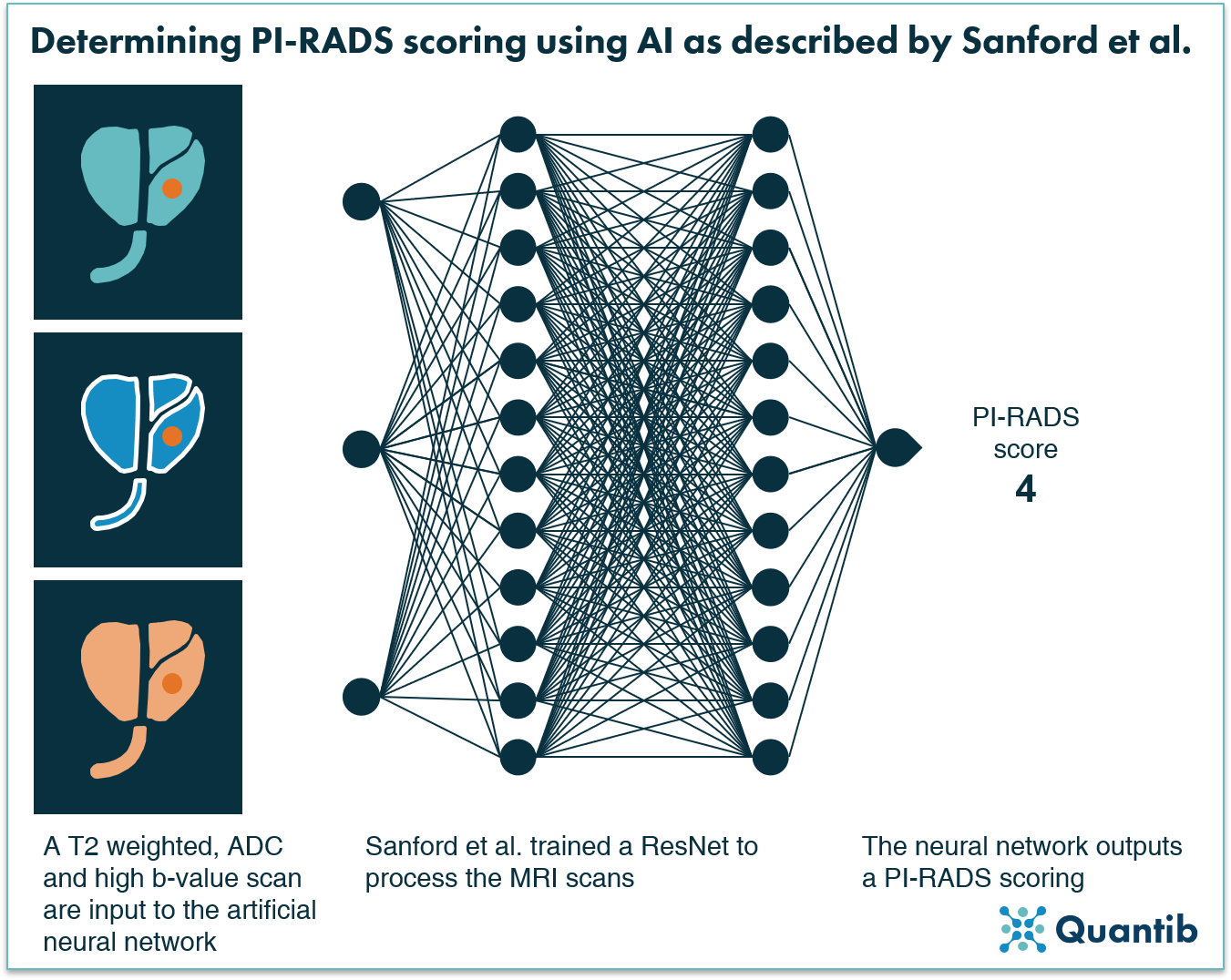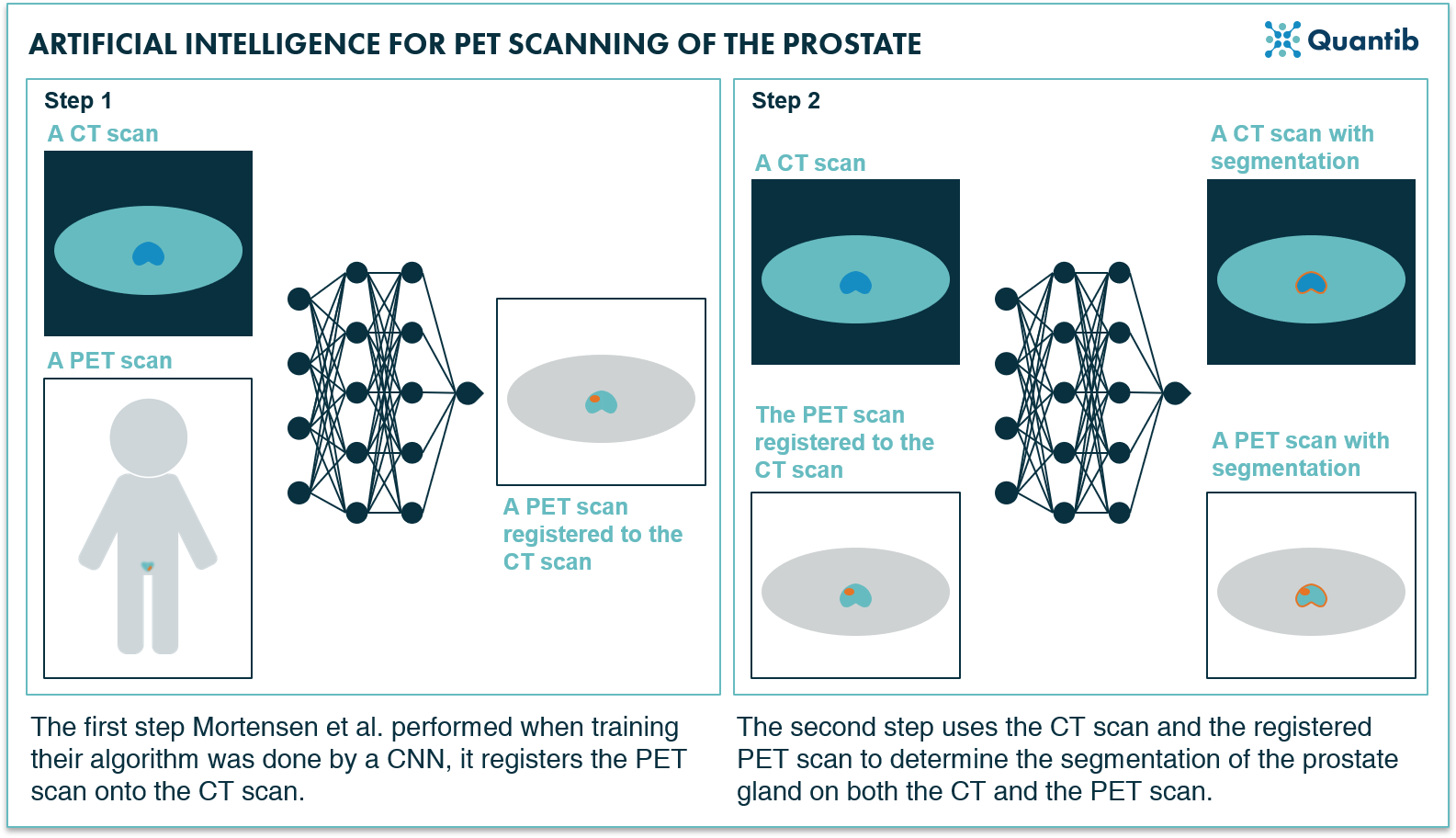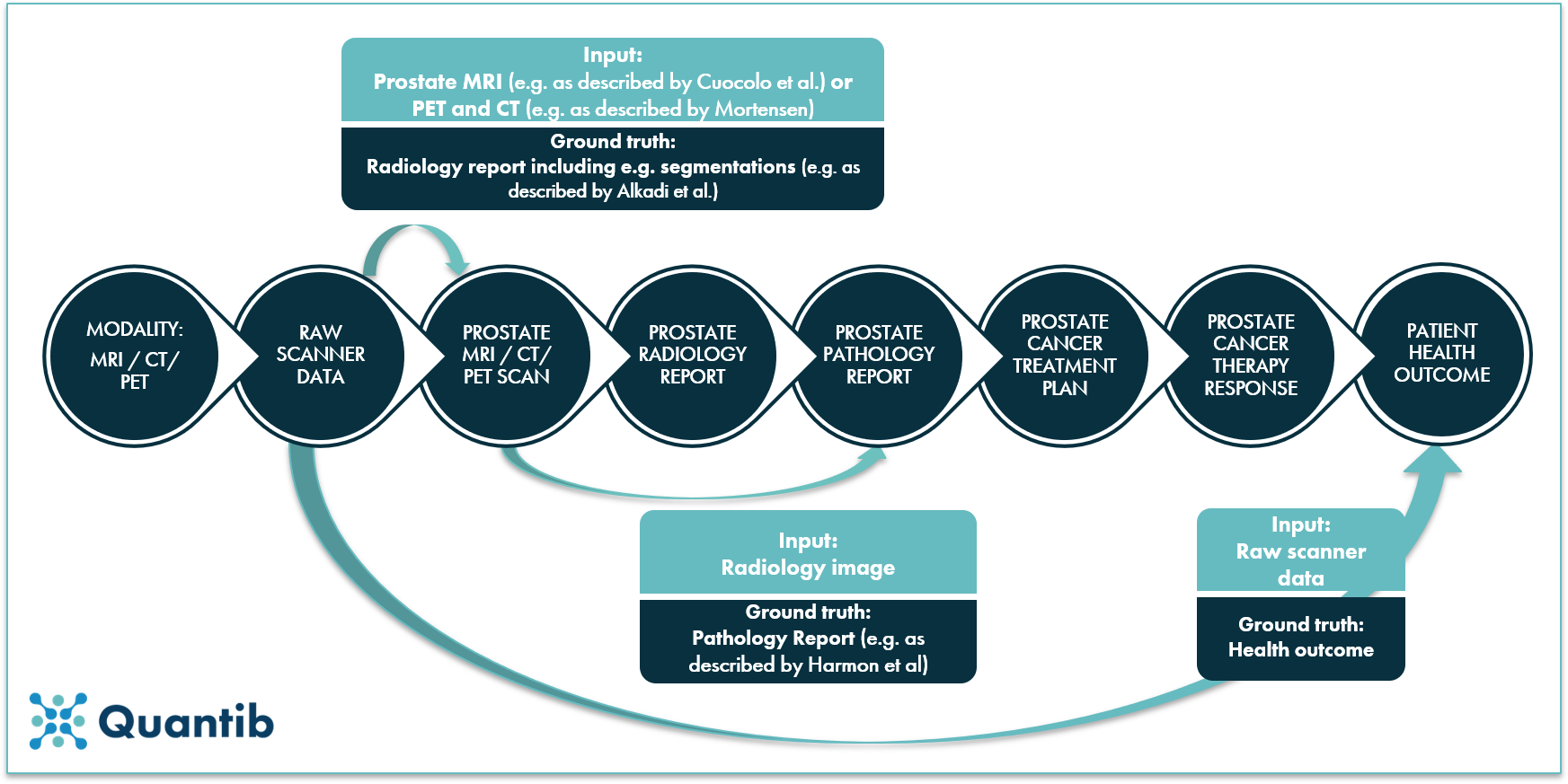Since recent guidelines advise the acquisition of an MRI prior to prostate biopsy, the number of prostate MRI scans made has further increased. Hence, timing could not be better for methods that support the radiologist with their analysis, for example, by (partly) automating the reading process. Artificial intelligence (AI) algorithms have been proven to successfully speed up complex tasks in other industries, which is why academic researchers are now actively investigating the applications of AI in prostate cancer diagnosis.
In this post we discuss 6 recent inspiring articles providing a flavor of what AI can do for diagnosing prostate cancer.
Let’s start with an overview of AI in prostate cancer
A Systematic Review of Artificial Intelligence in Prostate Cancer
Booven, D. J. Van et al.
For an overview of the already abundant possibilities, “A Systematic Review of Artificial Intelligence in Prostate Cancer” is a nice place to start. Van Booven et al. provide a compact overview of the many opportunities of AI in the diagnostic pathway of prostate cancer.
Starting with AI-based analysis of PSA measurements and other patient data to increase the sensitivity and specificity versus PSA determination alone. Additionally, applying artificial neural networks to histopathological data is discussed, for example, by predicting biopsy results and determining the Gleason score. This type of analysis offers the opportunity to reduce inter- and intra-observer variability versus human assessments. A third field of application that is addressed is the AI-assessment of prostate MRI scans to determine the Gleason scores.
To aid research of new (non-imaging) biomarkers, AI can play an important role in assessing a whole range of gene expressions that may be related to prostate cancer occurrence. As datasets can become extremely large, having AI lend a helping hand in this situation may be a godsend.
A less frequently discussed field, but nonetheless an area that holds great promise to improve prostate cancer care, is the scope of patient-centered treatment. For example by leveraging AI to compare patient data to norms derived from large databases. This will allow patients to better understand their situation and be in charge of their care. It may also bolster standardized data sharing, offering great opportunities to improve PCa care.
Lastly, van Booven et al. mention the great promise AI holds for stratification of risk of recurrence of prostate cancer. AI's ability to take many factors into account when determining a patient’s risk at cancer recurrence will aid in the search for new metrics.2
Applying AI to mpMRI for PCa diagnosis
Machine learning applications in prostate cancer magnetic resonance imaging
Cuocolo, R. et al.
Focusing specifically on AI applications in the context of prostate MRI Cuocolo et al. provide another excellent review in “Machine learning applications in prostate cancer magnetic resonance imaging”. The authors establish a basic understanding of machine learning by providing a very brief introduction (quite handy if you are unaware of the differences between supervised, unsupervised and semi-supervised learning, or are interested in a very brief primer of deep learning!). Additionally, the article discusses the typical pipelines for training a machine learning or deep learning algorithm in the context of prostate MRI. However, most ink is spent on an overview of the different applications of AI in prostate cancer, ranging from image segmentation to staging and biochemical recurrence. An extensive reference list supports the review and provides inspiration for further reading.3 Worth a read if you are interested in all the opportunities of AI in MRI prostate (and want a different piece of reading than our AI in prostate MRI overview page).
A Deep Learning-Based Approach for the Detection and Localization of Prostate Cancer in T2 Magnetic Resonance Images
Alkadi, R. et al.
Alkadi et al. wrote a more technical paper on the segmentation of the prostate organ, its zones and tumors. They used a deep neural network with a “deep convolutional encoder-decoder architecture”, which basically comes down to the more popular Unet, however, to limit the necessary computational resources, authors used a more down-scaled version by cutting back on specific connections that are usually made between the very first layers (for down scaling of the image) of a Unet and the deeper layers (for upscaling of the image). Nice results are claimed when comparing tumor segmentations to a manually determined ground truth: AUC of 0.995, an accuracy of 0.894, and a recall of 0.928. While unique in its approach, it is nice for those interested in deep learning methods for segmentation of various part of the prostate.4
Deep-Learning-Based Artificial Intelligence for PI-RADS Classification to Assist Multiparametric Prostate MRI Interpretation: A Development Study
Sanford, T. et al.
One of the fundamental steps in the prostate MRI workflow is the determination of a PI-RADS score per lesion. “Deep-Learning-Based Artificial Intelligence for PI-RADS Classification to Assist Multiparametric Prostate MRI Interpretation: A Development Study” describes the training and testing of a deep learning network (a CNN, or for the techies amongst us, a ResNet) and its ability to automatically determine a PI-RADS score (for lesions that have already been identified and segmented on the MRI, which could also be additional tasks AI is able to tackle). Authors claim a similar performance for their algorithm to that of human experts, providing another interesting use case for AI application in prostate MRI.5

Figure 1: Sanford et al. trained a ResNet determine the PI-RADS scoring based on a T2w scan, and ADC and a high b-value scan.
Prostate PET supported by AI
Artificial intelligence-based versus manual assessment of prostate cancer in the prostate gland: a method comparison study.
Mortensen, M. A. et al.
Next to applying AI to prostate MRI, PET of the prostate offers an attractive scope for AI deployment. An example paper by Mortensen et al. shows how a CNN can fully automate the segmentation of the prostate gland on CT images, where after the segmentation is aligned to the PET scan and elementary PET measurements are calculated. As the algorithm was able to provide perform these calculations in a matter of seconds with similar values to those manually determined, such applications offer a great promise of accelerating PET analyses.6

Figure 2: Mortensen et al. trained a 2-step algorithm to, as a final output, provide segmentation of the prostate gland on both the CT and PET scan. Firstly the PET scan is registered to the CT scan, secondly the prostate gland is segmented on the CT scan and the registration transformation is used to determine the segmentation on the PET scan.
One step further: leverage AI to link MRI to pathology findings
Artificial intelligence at the intersection of pathology and radiology in prostate cancer
Harmon, S. A., Choyke, P. L. & Türkbey, B.
Last but not least the application of AI to pathology holds great promise. Inspecting biopsy samples using image analysis software offers the opportunity of accelerating the biopsy analysis process, as well as minimizing inter- and intra-observer variance.
In their review paper Harmon et al. discuss the application of AI to mpMRI scans and to pathology data, as well as the exciting option to apply AI to both mpMRI and pathological data in order to improve prediction and grading of prostate cancer cases. Briefly mentioned already under the summary of the first article in this blogpost, training an algorithm that can predict pathology results using mpMRI scans, will allow for a faster, non-invasive diagnosis trajectory. Harmon et al. shed some more light on this option, while stressing the fact that sufficient high quality data is needed to make such an algorithm to the trick with a sufficient level of performance. Read this review article to learn more about recent advances in AI applied to combining mpMRI with digital pathology and the possibility of determining advanced characterization using mpMRI alone.7

Figure 3: The radiology workflow for prostate cancer diagnosis consists of many steps. AI can offer a wide range of options to support this process.
Concluding
Apart from it being inspiring to read about all the possibilities and the great research that is done, the fact the results are now starting to make their way into the clinic is even exciting.
Are you curious for a complete overview of AI applications in the prostate cancer pathway? Check our “Ultimate guide to AI in prostate radiology”.
Bibliography
- Globocan 2020. Prostate fact sheet. Available at: https://gco.iarc.fr/today/data/factsheets/cancers/27-Prostate-fact-sheet.pdf. (Accessed: 15th April 2020)
- Booven, D. J. Van et al. A Systematic Review of Artificial Intelligence in Prostate Cancer. Res. Reports Urol. 13, 31–39 (2021).
- Cuocolo, R. et al. Machine learning applications in prostate cancer magnetic resonance imaging. Eur. Radiol. Exp. 3, (2019).
- Alkadi, R., Taher, F. & Naoufel, A. E. A Deep Learning-Based Approach for the Detection and Localization of Prostate Cancer in T2 Magnetic Resonance Images. J. Digit. Imaging 32, 793–807 (2018).
- Sanford, T. et al. Deep-Learning-Based Arti fi cial Intelligence for PI-RADS Classifi cation to Assist Multiparametric Prostate MRI Interpretation: A Development Study. J. Magn. Reson. Imaging 52, 1499–1507 (2020).
- Mortensen, M. A. et al. Artificial intelligence-based versus manual assessment of prostate cancer in the prostate gland: a method comparison study. Clin. Phyiologycal Funct. Imaging 1–8 (2019). doi:10.1111/cpf.12592
- Harmon, S. A., Choyke, P. L. & Türkbey, B. Artificial intelligence at the intersection of pathology and radiology in prostate cancer. Diagn Interv Radiol 183–188 (2019). doi:10.5152/dir.2019.19125

